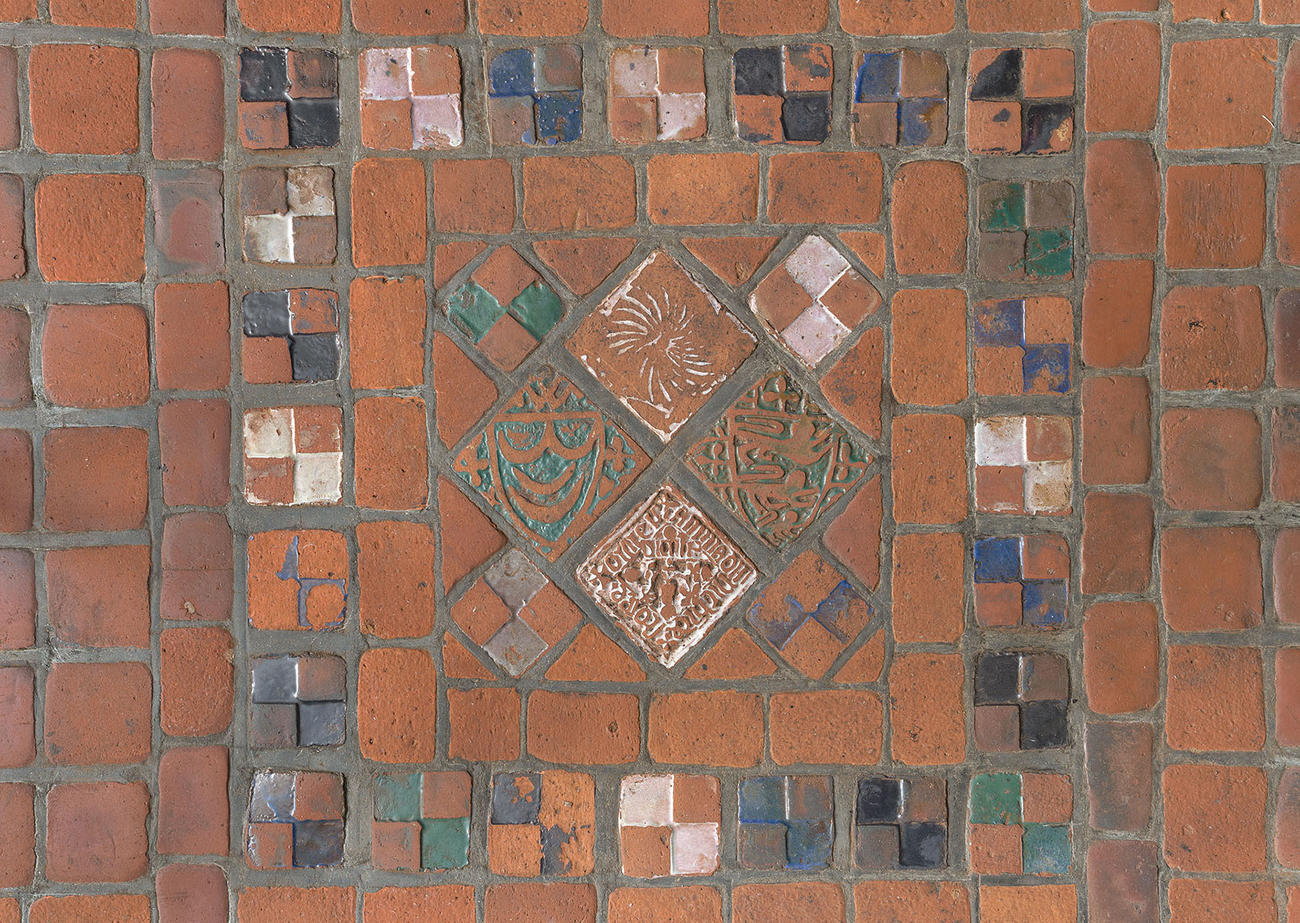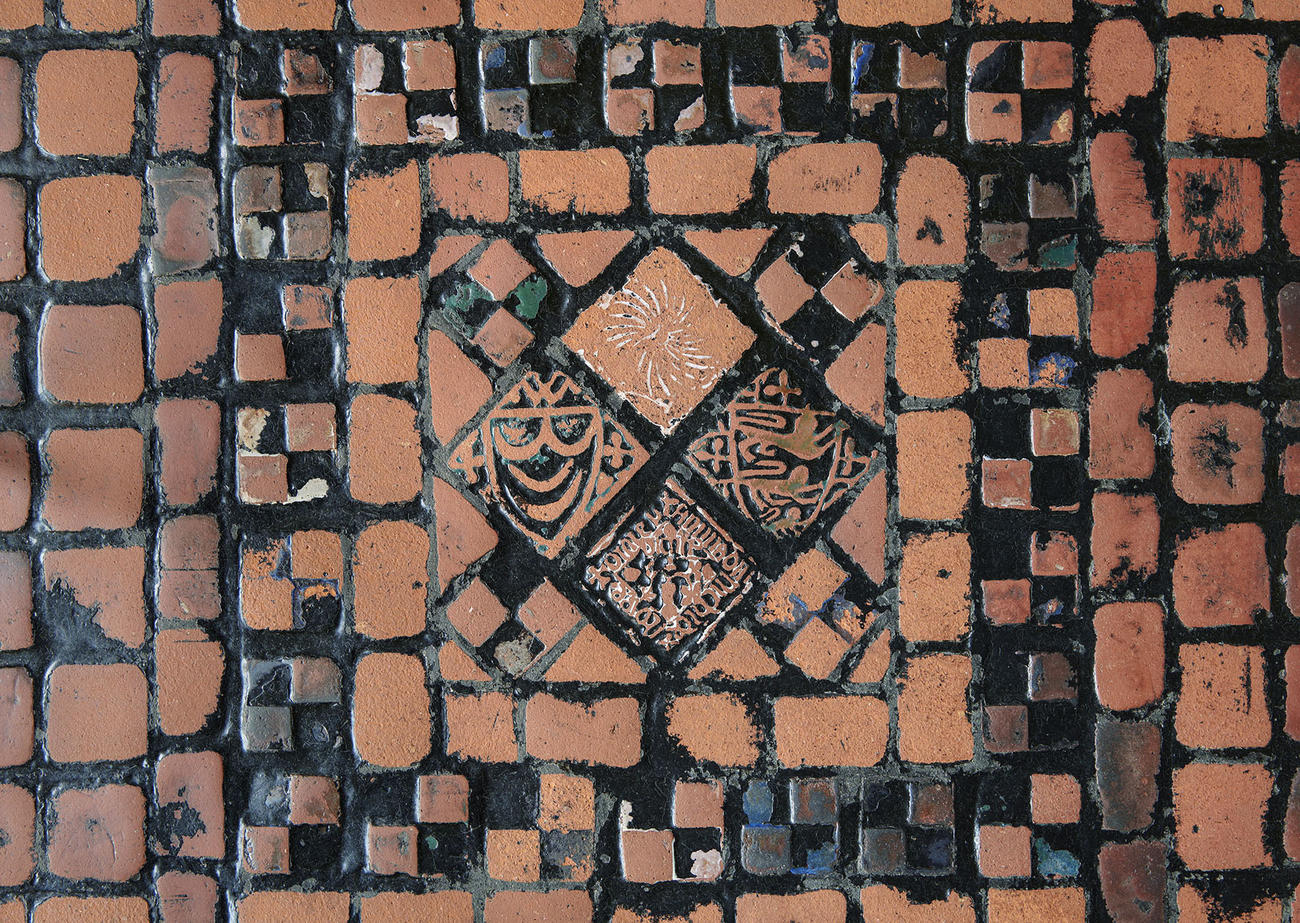General admission for children 17 years and under is always free
Isabella Stewart Gardner oversaw all the details of the Museum during its design and construction, 1899–1902. She collaborated with the tile maker and owner of the Moravian Pottery and Tile Works, Henry Chapman Mercer, on the galleries’ custom floors. Today, the Museum’s conservation team works to restore their brilliance.
Henry Chapman Mercer: The Man Behind the Kiln
Henry Chapman Mercer (1856–1930) founded the Moravian Pottery and Tile Works in 1898 after realizing that the skilled pottery craft of the Pennsylvania-German Moravian community was headed towards extinction due to increased industrialization. A key figure in America’s Arts and Craft movement which elevated craftsmanship and decorative arts, Mercer was compelled to carry the trade into the modern age.
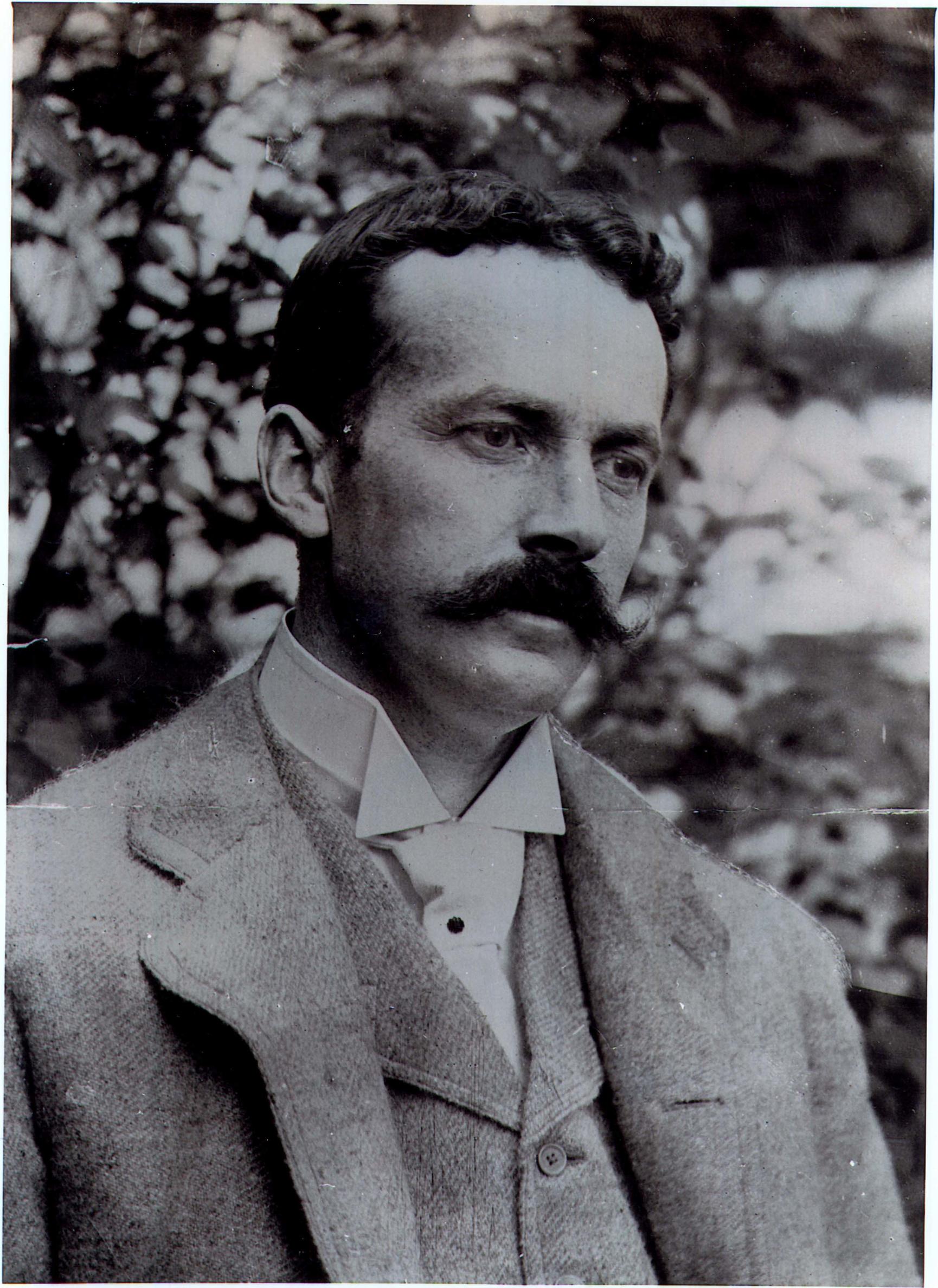
From the Collection of the Mercer Museum Library of the Bucks County Historical Society
The trained archaeologist departed from his scholarly pursuits to study the craft at the few pottery workshops remaining in Bucks County. At the Tile Works, he hired ceramicists and trained laborers to produce his unique designs by molding tiles from handmade casts and applying slips and glazes for firing. Mercer’s earliest notable series, Castle Acre, drew inspiration from medieval tiles in Europe and can be seen throughout the Gardner Museum.
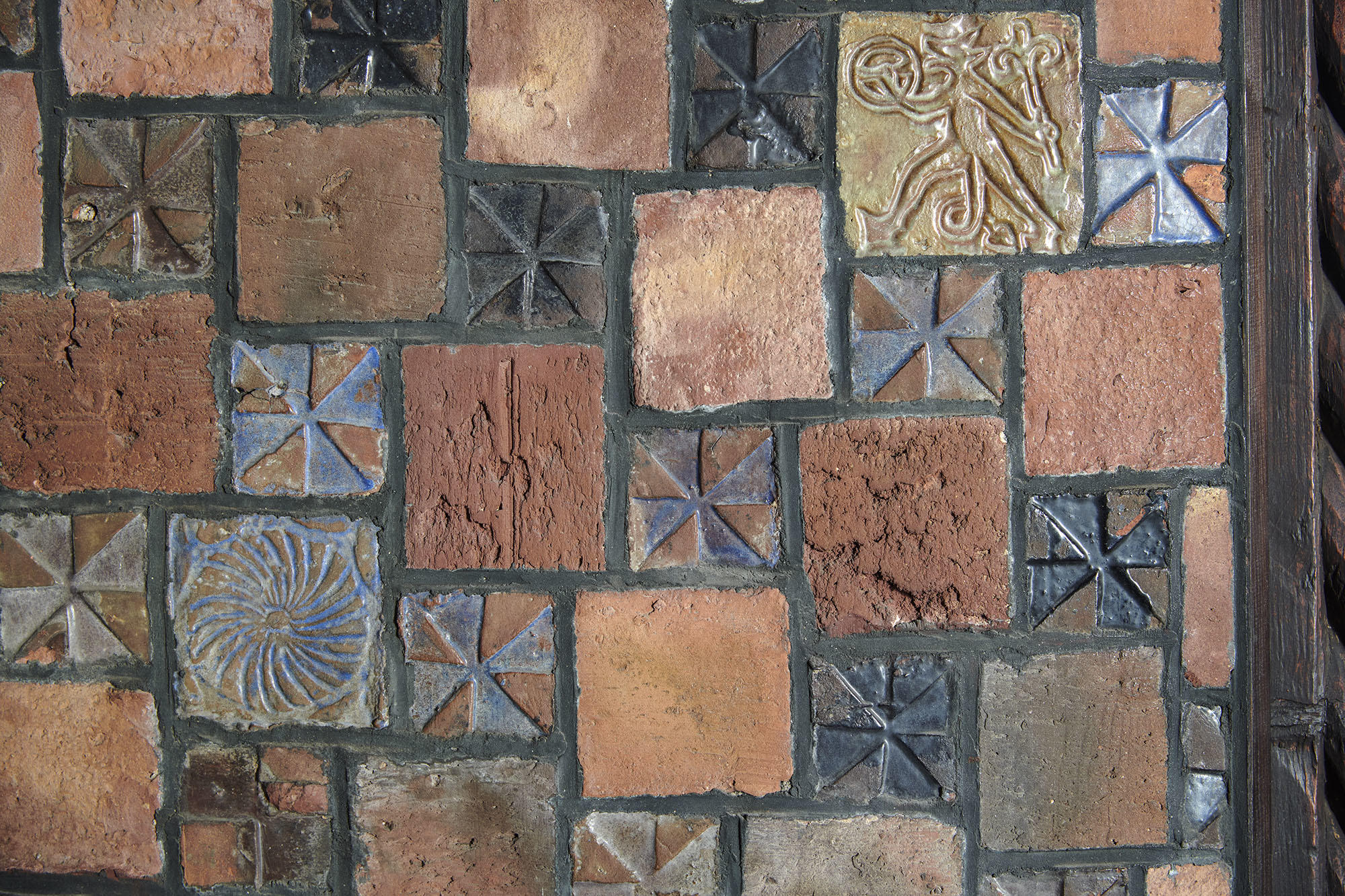
Isabella Stewart Gardner Museum, Boston (C25w51.1-8)
Moravian Pottery and Tile Works (established Doylestown, Pennsylvania, 1898, maker), Henry C. Mercer (American, 1856 - 1930, designer), Castle Acre Tiles from the Veronese Room, 1901. Glazed ceramic
From Doylestown to Fenway Court
As Isabella Stewart Gardner planned the construction of the Museum, her friend J. Templeman Coolidge reported that she was immensely disappointed that she could not import fanciful floor tiles from Europe and refused to settle on what she saw as lesser quality products produced in the United States. Fortuitously around the same time, she learned of the exceptionalism of Mercer’s craftsmanship either through Coolidge or the Society of Arts and Crafts of Boston.
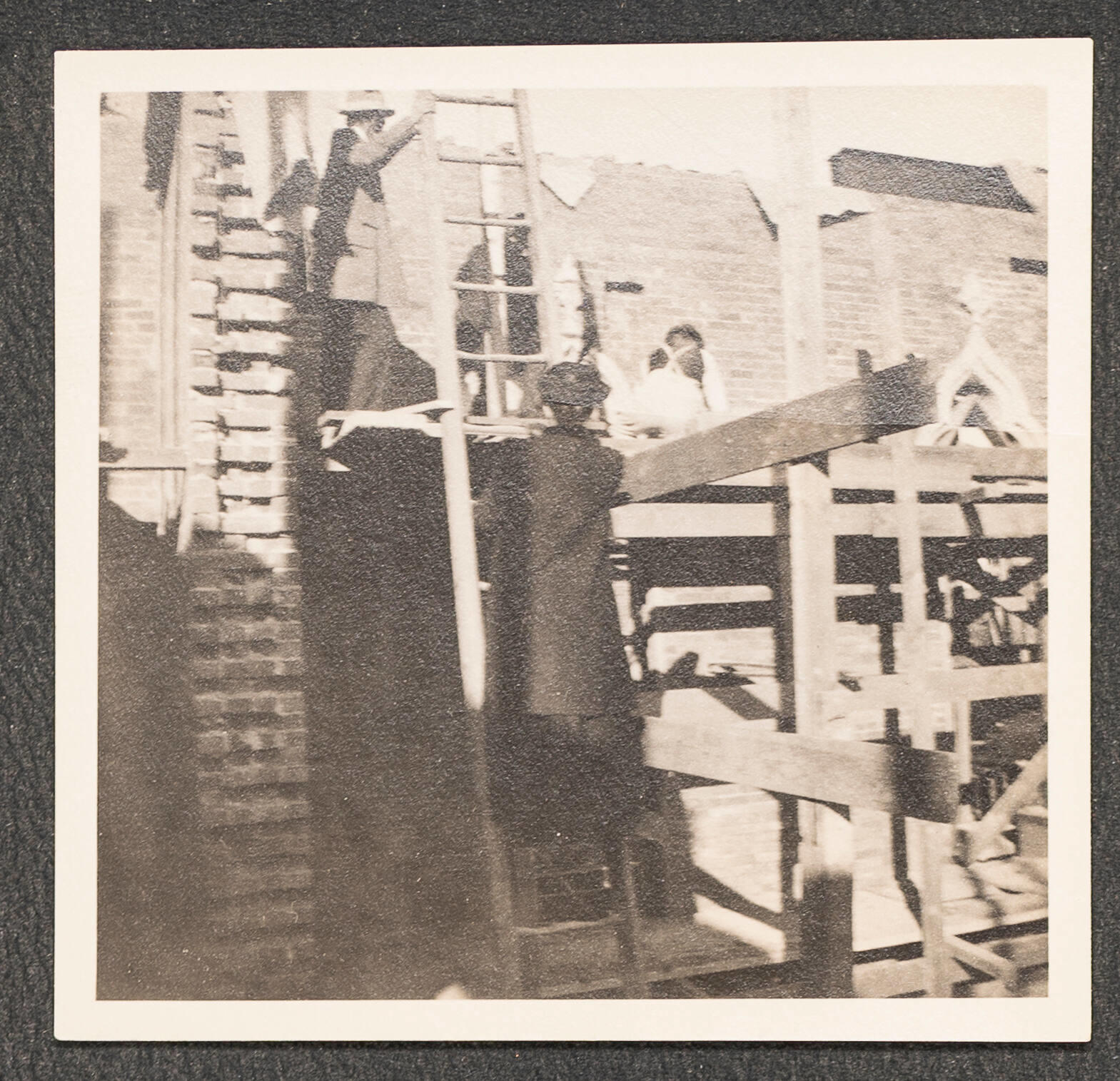
Isabella Stewart Gardner Museum, Boston (ARC.009322)
American, Boston, Fenway Court During Construction: Isabella Stewart Gardner on a Ladder, 1900. Gelatin silver print
Henry and Isabella, A Partnership
Once they became acquainted, Gardner and Mercer worked on the plans for the floor designs together. In April 1901, Isabella wrote: “Please also, send me a sketch of the large room under the Gothic Room [the Dutch Room], but less handsome & much cheaper…. The walls of that room will be hung with green silk.” Mercer sent sketches to his clients, including one to Isabella to propose a layout for the tiles in the Tapestry Room. Ultimately, Isabella chose a simpler arrangement.
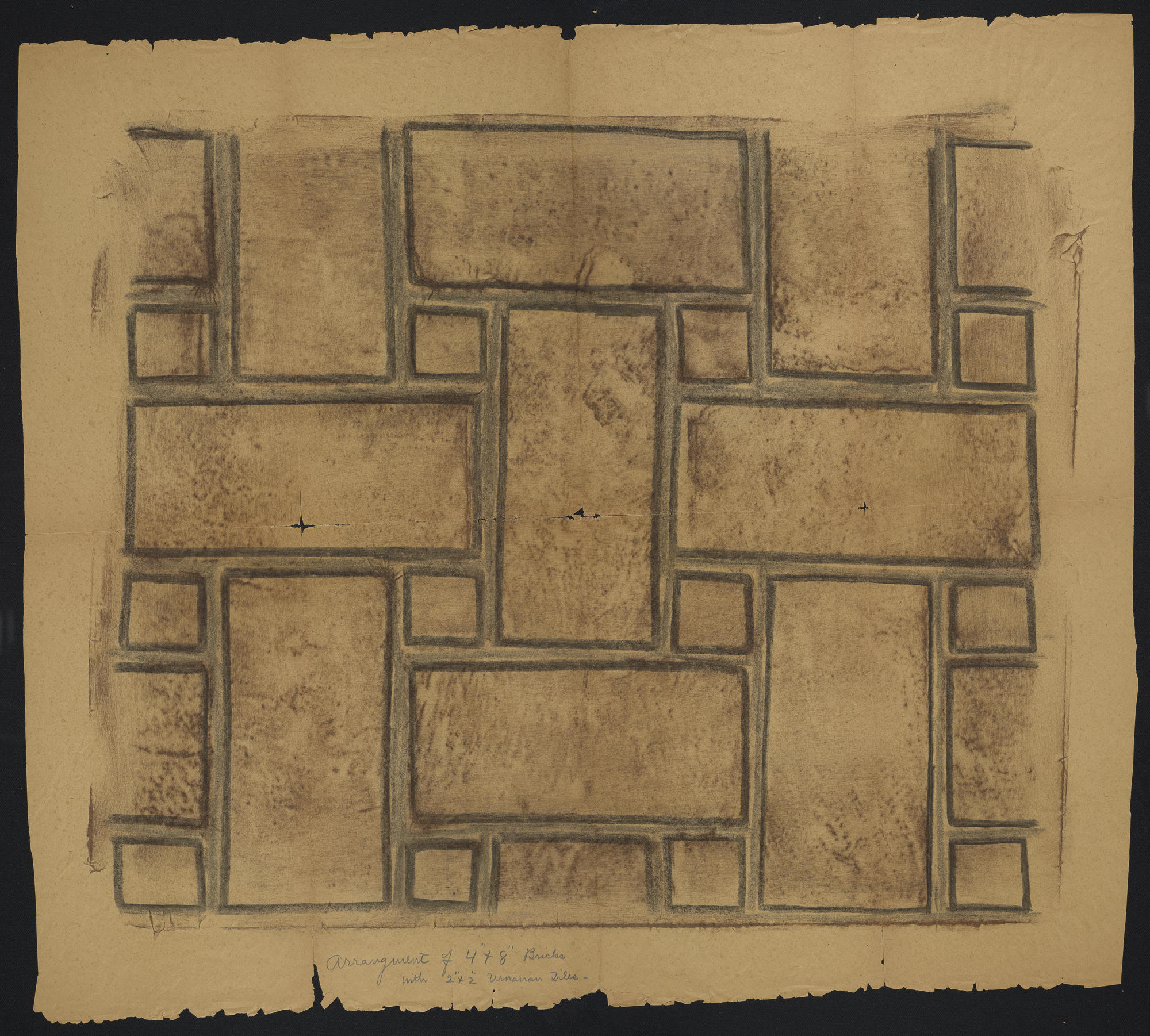
Isabella Stewart Gardner Museum, Boston (ARC.009074)
Henry C. Mercer (American, 1856–1930), Proposed Arrangement of Bricks and Moravian Tiles in the Tapestry Room, about 1914. Crayon rubbing on paper with inscription in graphite
Bringing Isabella’s Vision Back to Life
Isabella’s vision for the tiles included shine. Mercer wrote to her in 1902 with detailed instructions on how to maintain the tiles after observing the oiling practices at the Museo Nazionale—modern day Museo Nazionale del Bargello—in Florence. “Here is the receipt of the Museo Nazionale for a very beautiful oil gloss on their brick pavements…. I think it must take some time to get the beautiful rich gloss & though the man said a year I don't think he was there in 1870 when the floor was laid. It may take longer. But at all events with the oil & sawdust the floor is always improving. Only don't expect to get the rich old meerschaum gloss too quickly.”
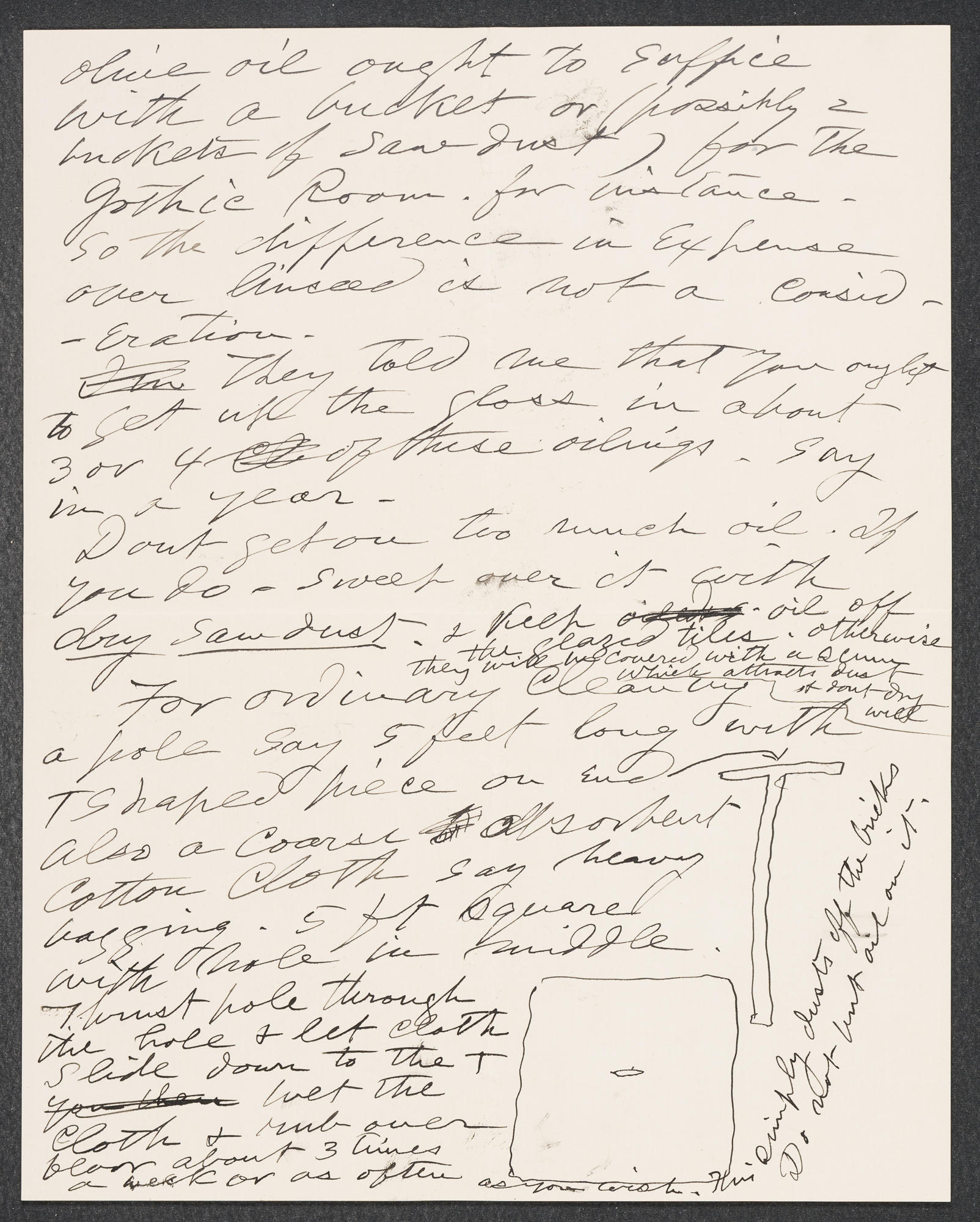
Isabella Stewart Gardner Museum, Boston (ARC.002323)
Henry C. Mercer (American, 1856–1930), Letter and Instructions for Oiling Brick to Isabella Stewart Gardner from Florence, 14 February 1902. Ink on paper
While it's unclear if Gardner had her team gloss the tile floor with olive oil and sawdust three times yearly as Mercer suggested, photographs show that several of the tiled floors were treated with a new, pigmented coating after 1926. Likely an early preservation effort, these changes deviate from the intended ambiance of the gallery space.
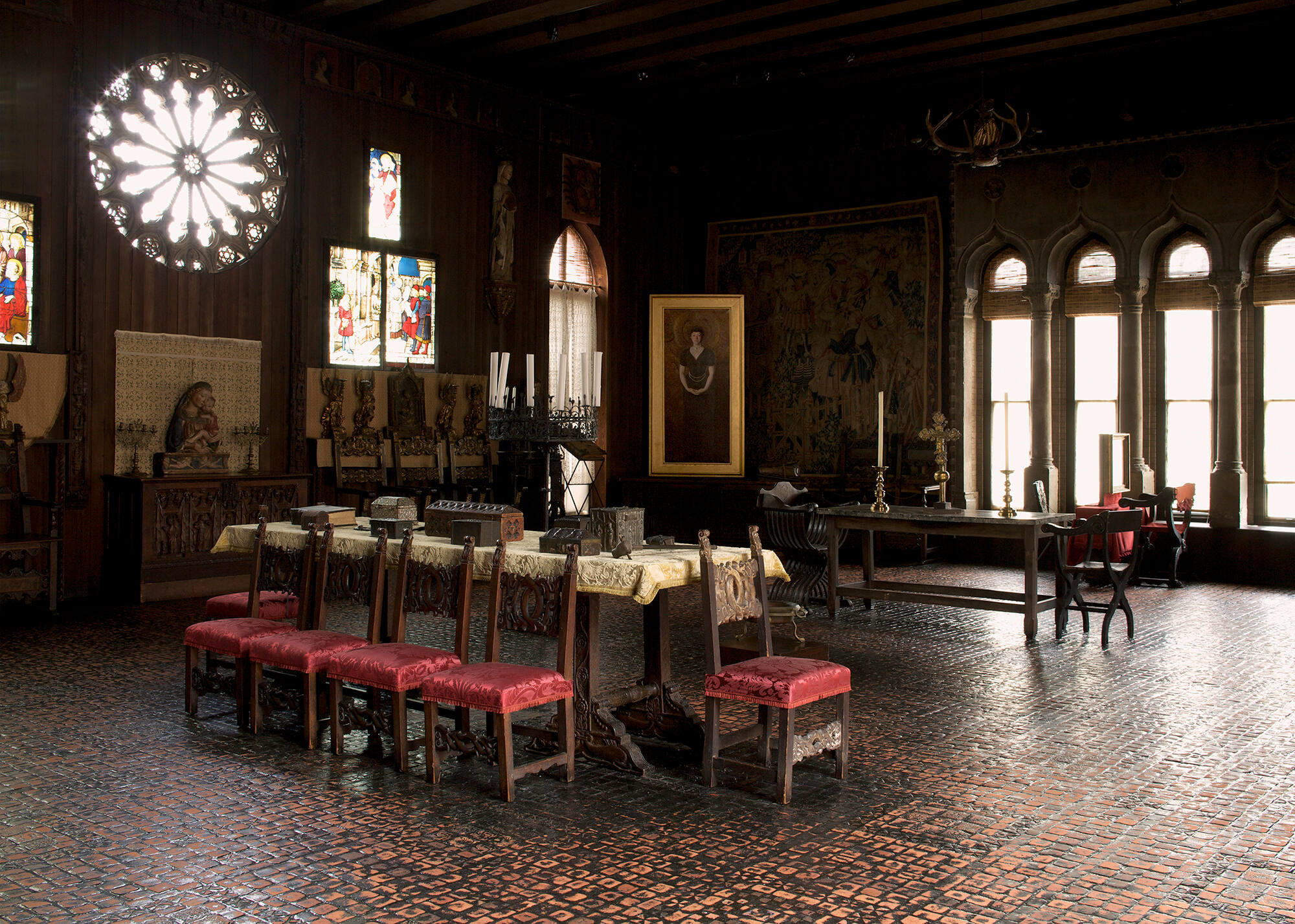
Isabella Stewart Gardner Museum, Boston. Photo: Sean Dungan
Gothic Room, 2009, showing the tiles with a pigmented coating
Since 2012, the Gardner Museum has restored the appearance of the floors in four galleries including the Tapestry Room, Fenway Gallery, Long Gallery, and most recently, the Gothic Room, by cleaning the tiles and applying a new clear protective coating. The Fall 2023 conservation work on the Gothic Room tiles allows visitors to finally see the multiple hues of the pigmented glazed tiles scattered throughout the space.
Isabella Stewart Gardner Museum, Boston
Moravian Pottery and Tile Works (established Doylestown, Pennsylvania, 1898, maker), Henry C. Mercer (American, 1856 - 1930, designer), Castle Acre Tiles from the Gothic Room, before and after the 2023 cleaning. Glazed ceramic
Henry Chapman Mercer’s Moravian Tiles have a permanent home at Isabella’s Museum and will continue to serve as the foundation for several of Isabella’s galleries. Want to learn more about Moravian Pottery and Tile Works? Tour the Doylestown, Pennsylvania factory that is still in operation today, or pay a visit to Mercer’s home at Fonthill Castle.
